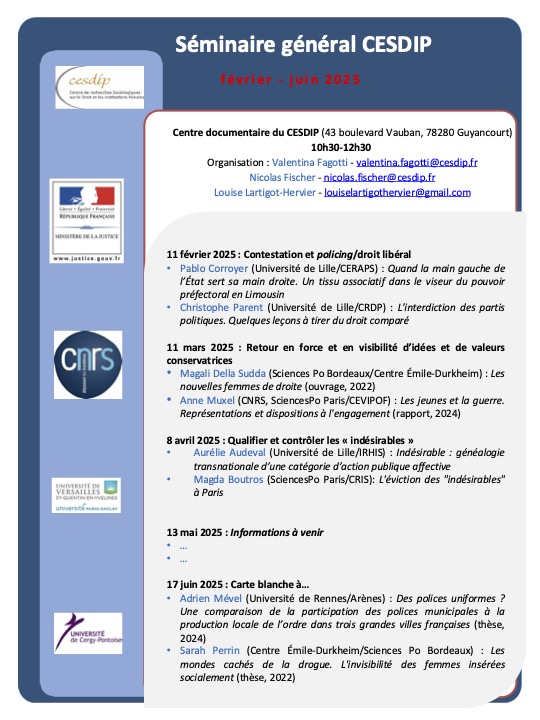
By Philippe ROBERT and Renée ZAUBERMAN. Statistical treatments by Sophie PEAUCELLIER and Fadoua JOUWAHRI – July 2017
Philippe Robert and Renée Zauberman, who head the Observatoire scientifique du crime et de la Justice (OSCJ), have recently published an overview of feelings of insecurity and fear of crime in France. The present paper describes the various dimensions of the subject and its trends over the last few decades. Statistical analysis was performed by Sophie Peaucellier for the national survey and by Fadoua Jouwahri for the Paris Region survey.
Since the 1983 municipal election campaign, feelings of insecurity and fear of crime have been a basic component of the extreme right wing’s stock-in-trade. For even longer, ever since the 1978 and 1981 laws known as the Peyrefitte Acts, they are also central to the road map of the right wing in general. What about the left? It too swung over to the theme, more or less willingly, from the 1997 Villepinte colloquium on. So here we are: it has taken one third of a century for the theme of unsafety related to crime to completely invade public debate… And at present, the terrorist attacks have brought the subject to the ignition point. It is not enough, however, to observe fear of crime in the political/media arena, we must begin by plotting its distribution throughout society. Many academic essays, in recent years, have tried to account for its success, but they often suffer from the use of partial or monographic data as well as from a lack of chronological depth.
As for us, we began our work in 1980 with an inventory of the research conducted in the United States, which was practically un- known in France at the time2. We then mustered the rare dependa- ble data at our disposal, so that by the 1990s we were able to em- phasize the many facets of feelings of insecurity and fear of crime3. We explored them again in the early 2000s, to point up the gradual shifts in the social groups concerned with safety4. In 2002, we pub- lished an overview of available evidence5. We have now decided to return to this endeavour presently because new data are again available. However imperfect, they do enable us to document the various aspects of insecurity and above all, to track the current trends. Indeed, the development of victimisation surveys, repeated at regular intervals, allows for more systematic study of feelings of insecurity.
In the national studies, the questions pertaining to feelings of insecurity were often affected by fluctuating formulations. These French surveys have, at least, the merit of understanding that feelings of insecurity are not an elementary dimension susceptible of measurement by any single item. These national findings are consolidated by data from the Paris Region, which, although they cover a somewhat shorter lapse of time (since 2001), are based on very stable questions. While French victimisation surveys generally address the need to distinguish between various circumstances and places generating insecurity, and also offer respondents a range of graduated responses, conversely, they do not explore those emotional reactions that differ from fear and do not differentiate the various sorts of victimisation experiences. They are, at any rate, the only precise findings documenting insecurity in France, and we use them here to etch out a picture of fears and concern with crime.



